Note: This website was automatically translated, so some terms or nuances may not be completely accurate.
Kusumi Pharmaceutical Museum: Sharing the Culture of "Care" with the World
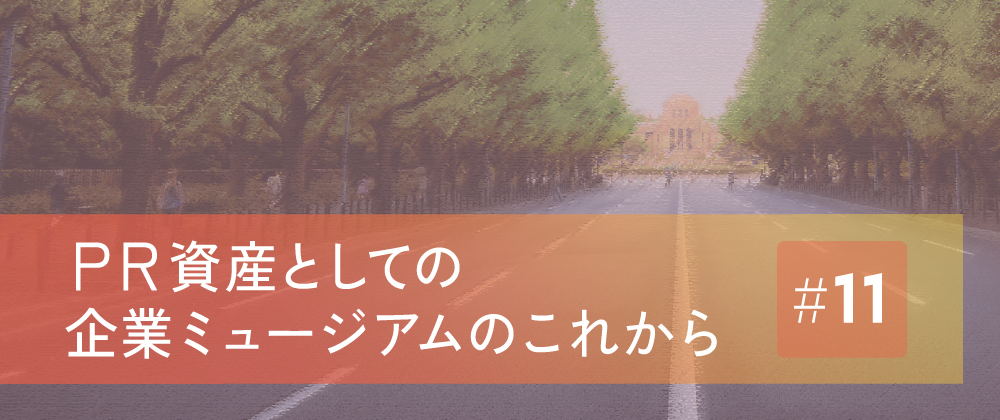
Corporate museums occupy a buffer zone spanning both the academic realm of "museums" and the business realm of "corporations." They are organizations that collaborate extensively with corporate departments such as public relations, branding, advertising, and human resources. In this series, PR professionals will introduce various museums operated by corporations, exploring their roles, functions, and potential.
Salonpas, trademarked in over 100 countries worldwide and holding the top global market share for analgesic and anti-inflammatory patches, has become a universal term. This article introduces Hisamitsu Pharmaceutical's museum, which showcases the culture of "hand treatment" that gave birth to Salonpas and remains its foundation, sharing this heritage globally.
Reporting and Text: Kyoko Fujii (PR Consulting Dentsu Inc.)
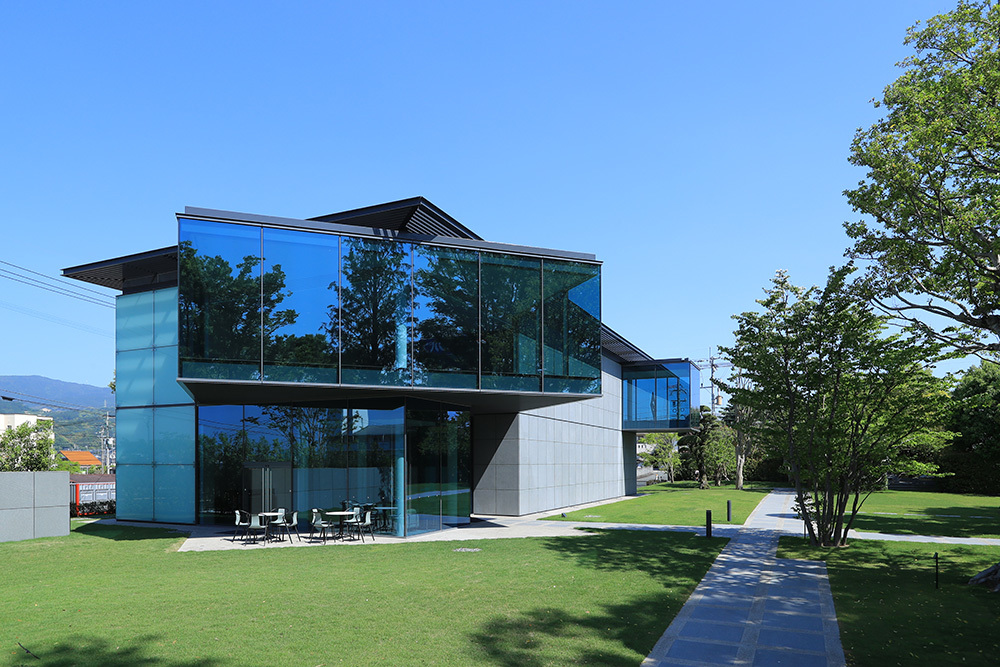
A Corporate Museum Designed by Poet of Form Bonanotte
The Hisamitsu Pharmaceutical Museum was established in 2019 in Tosu City, Saga Prefecture, as part of the company's 170th anniversary commemorative projects. Hisamitsu Pharmaceutical, famous for its topical analgesic and anti-inflammatory agent Salonpas, has its Kyushu Headquarters in Tosu City, Saga Prefecture, the birthplace of the company, and its Tokyo Headquarters in Chiyoda Ward, Tokyo. This museum is located within the grounds of the Kyushu Headquarters. Its construction was planned in 2017, the 170th anniversary of the company's founding, to pass down the management philosophy and principles inherited from the founder to the employees.
Although named a museum, it was originally established as an employee training facility. Consequently, unlike other corporate museums, it lacks a dedicated website or brochure. While not open to the general public independently, the Salopass factory is located immediately adjacent. The museum accepts visits upon request from group visitors, such as those touring the factory.
This two-story museum has a total floor area of 687 square meters and displays approximately 90 exhibits, making it modest in scale. However, its elegant building was conceived in its basic design by the Italian sculptor Checco Bonanotte, a genius of figurative sculpture known as the "Poet of Form." Its modern, simple yet distinctive design makes it clear that this museum conveys its message not only through its interior exhibits but also through its exterior appearance.
Tosu City is also home to another museum established by Hisamitsu Pharmaceutical. The Nakato Memorial Medicine Museum opened as part of the company's 145th anniversary commemorative project. It was established to convey the history of "medicine" from Tashiro (an Edo-period place name in eastern Tosu City) and beyond, both domestically and internationally, to future generations. Later, the Nakato Memorial Foundation, a public interest incorporated foundation, was established, and its operation was transferred to the foundation. The basic design of this Nakato Memorial Medicine Museum was also by Bonanotte.
The Hisamitsu Pharmaceutical Museum is managed by the General Affairs Department of the company's Kyushu Headquarters. This time, we were guided by Mr. Sakae Yano, Executive Officer and General Affairs Department Manager at the Kyushu Headquarters BU Division, and Ms. Moe Sasaki from the same department's General Affairs Section.
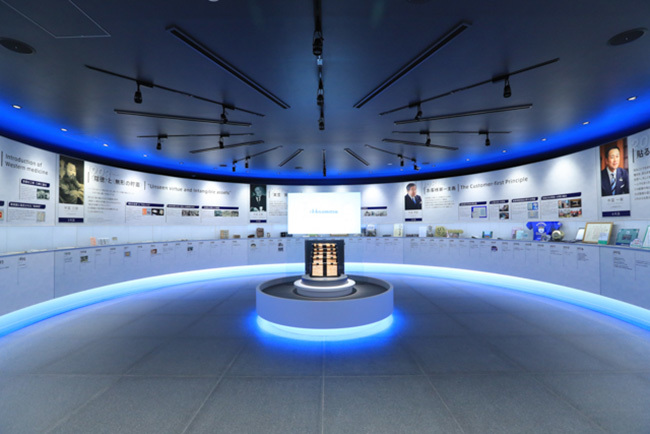
The Spirit of the Founder Conveyed Through Willow Baskets
The first floor displays words left by successive leaders from founder Jinpei Hisamitsu (honorific omitted) to the current sixth-generation president, Kazuhide Nakatomi, alongside products they developed, introduced with accompanying videos. The second floor houses a training room and exhibits works such as Bonanotte sculptures and sketches.
The first thing that catches your eye upon entering the exhibition room is the willow basket. Mr. Yano, who led the museum establishment project, explains its significance: "Starting with the first president who carried this basket on his back to sell medicine as far as Hyuga (Miyazaki), this museum conveys the spirit with which each generation of leaders has walked this path. This museum was established so that we can return to our roots when we feel lost and boost our morale." This willow basket is a symbolic object meant to evoke the spirit of the founder.
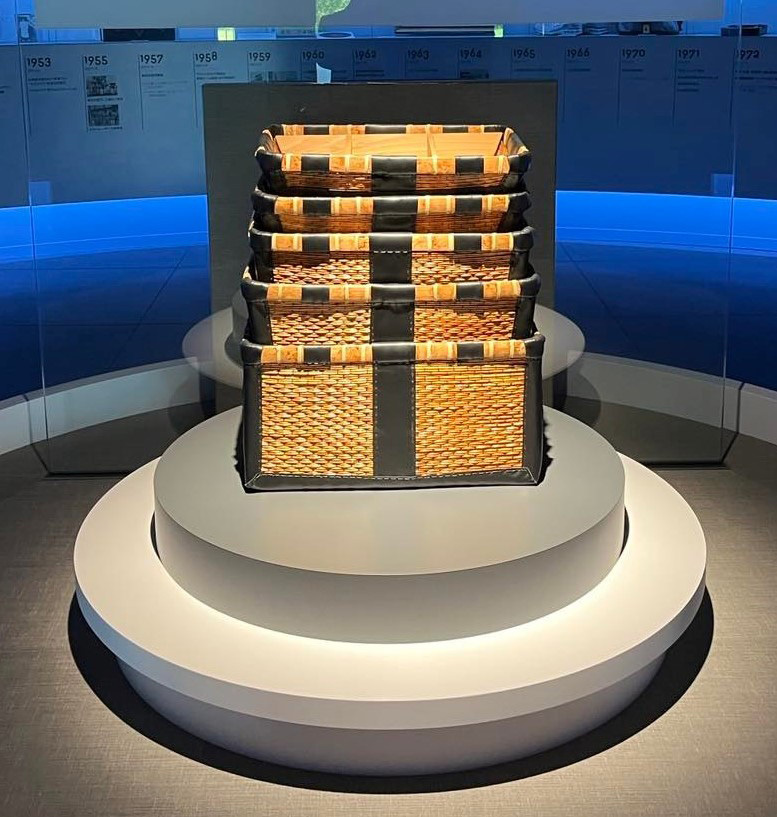
According to Mr. Sasaki, the museum is used for training new employees, those in their fifth year, and managers. After visiting, various impressions are received, such as "My motivation for work increased" and "My pride in the company and respect for my seniors grew stronger."
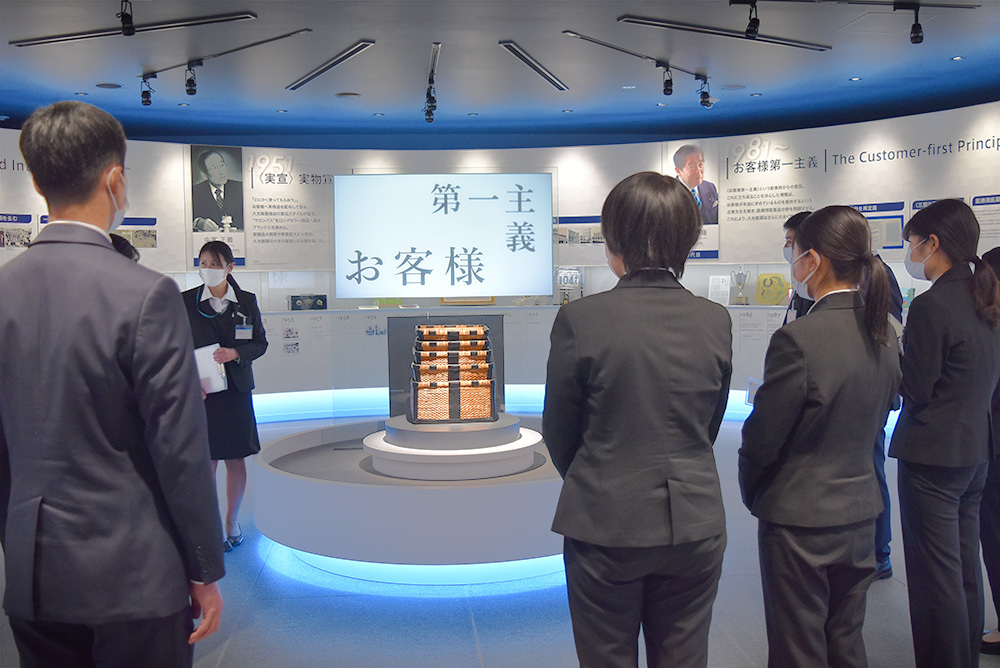
Established in 2019, the museum faced the immediate spread of the novel coronavirus, leading to continued restrictions on admission in 2020 and 2021. Even so, from its opening until February 2020 (pre-pandemic), it welcomed a cumulative total of 5,000 visitors, despite not being open to the general public. Hisamitsu Pharmaceutical holds its shareholders' meetings at its Kyushu headquarters, so shareholder tours were also conducted in 2019, before the pandemic.
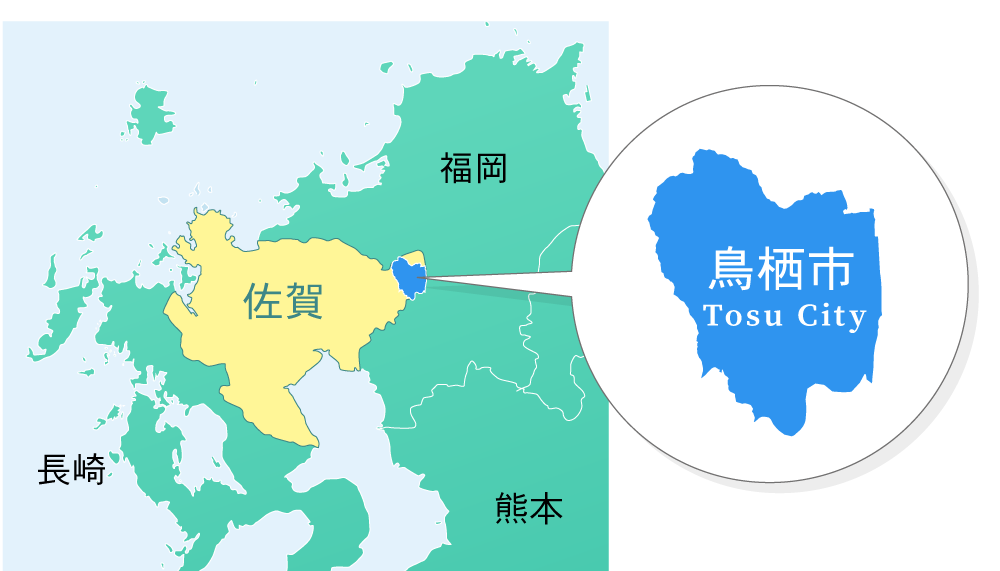
The eastern part of Tosu City, where this museum stands, was known as Tashiro during the Edo period. In 1599 (Keicho 4), it became part of the Tashiro domain of the Tsushima domain (present-day Tsushima City, Nagasaki Prefecture). This Tashiro, located on the border with Fukuoka Prefecture, has an inseparable relationship with Hisamitsu Pharmaceutical. The origins of Hisamitsu Pharmaceutical trace back to "Komatsuya," a traveling medicine seller established in Tashiro in 1847 (Kōka 4).
One of Japan's Four Major Medicine-Selling Hubs
While "Toyama's traveling medicine sellers" are famous, Tashiro was one of the birthplaces of "Japan's Four Great Medicine-Selling Regions," alongside Toyama, Yamato (Nara), and Ōmi (Shiga). The itinerant medicine sales system involved "medicine sellers," known as "Uriyaku-san," who carried heavy willow baskets weighing up to 20 kilograms on their backs. They would leave medicine with households and return six months to a year later to collect payment for the medicine used during that period. Tashiro, being the starting point of the Nagasaki Highway with its post station, was easily accessible to Western medicines from Nagasaki, where Dutch studies (Rangaku) flourished, leading to the prosperity of the itinerant medicine sales business.
By the Meiji era, sales routes extended not only throughout Kyushu but also to Shikoku, making Tashiro a thriving hub for the distributed medicine sales business. At its peak, approximately 500 salespeople set out from Tashiro to travel nationwide. Nippei Hisamitsu, founder of Hisamitsu Pharmaceutical, started his business as one such medicine seller from Tashiro.
Plaster Medicines Born in Tashiro
Entering the Meiji era, Yōichi Hisamitsu (2nd generation) of Komatsuya changed the shop name to Hisamitsu Jōeidō and created the stomach tonic and disinfectant "Kishintan" in 1869 (Meiji 2). During the Sino-Japanese War that erupted in 1894 (Meiji 27), Kishintan was designated as a military medicine and was also used in the subsequent Russo-Japanese War. In 1903 (Meiji 36), the third-generation owner, Kyumitsu Saburō (who later adopted into the Nakatomi clan of samurai from the Kurume domain, becoming Nakatomi Saburō), incorporated the business as Kyumitsu Brothers Partnership and began selling Kishintan to wholesalers in the Kansai region.
Subsequently, in 1907 (Meiji 40), the company began selling "Asahi Mankin-ko," an ointment made by spreading a mixture of sesame oil and lead丹 on Japanese paper. One of Tashiro's main products was "plaster medicine," and among these, "Asahi Mankin-ko" gained a reputation during the Taisho-era "Spanish Flu" pandemic for its efficacy in relieving joint pain caused by high fever, leading to a flood of orders. The saying "For internal medicine, go to Etchu; for external medicine, go to Tashiro Pharmaceutical" emerged, solidifying Tashiro Pharmaceutical's reputation for its strength in plasters. This became the catalyst for expanding its sales network nationwide.
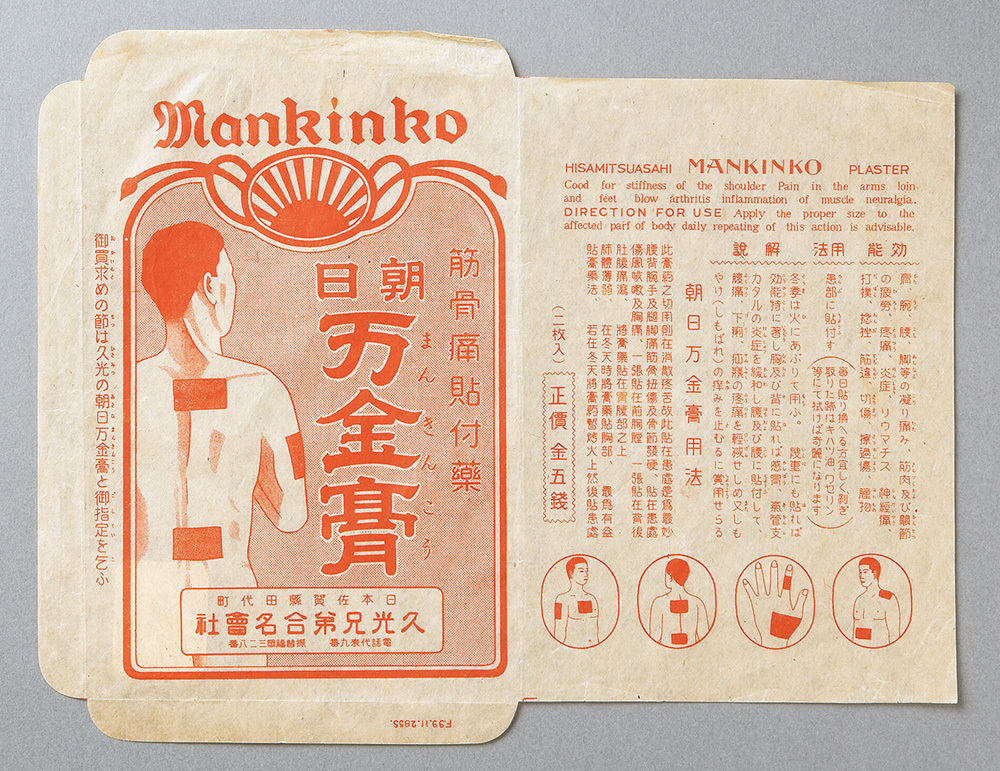
The Birth of Salonpas
However, Asahi Mankin-ko had drawbacks: it was black, had a distinctive odor, and left dark marks on the skin after removal. To overcome these issues, research led to improvements in the manufacturing process. This resulted in the creation of "Salonpas" in 1934 (Showa 9), a pure white patch with a refreshing scent.
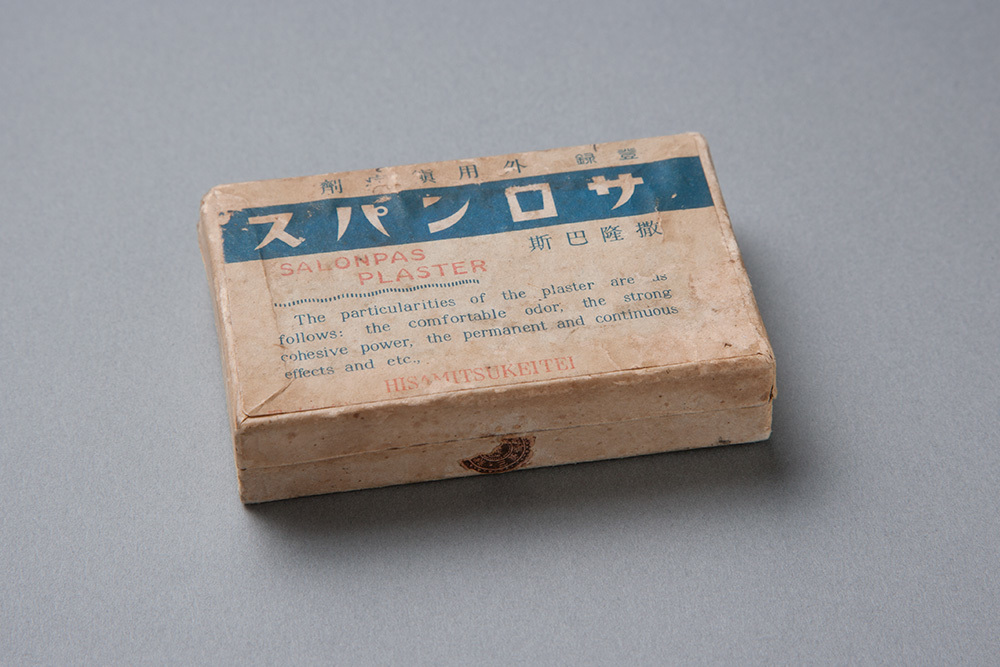
Subsequently, it expanded dramatically through local production overseas and exports to numerous countries. Today, it is trademarked in over 100 countries worldwide and has held the top global market share in the analgesic and anti-inflammatory patch category for six consecutive years since 2016 (according to Euromonitor International).
Spreading its wings from Tosu to the world
This museum embodies the values cherished by Hisamitsu Pharmaceutical, evident throughout the entire building and every corner of the garden. While President Hirotaka Nakatomi, the fifth president, was inspired by a Bonanotte work he encountered at an art museum, commissioning Bonanotte for the building's design wasn't merely about aesthetics; it stemmed from a shared philosophical resonance.
Bonnotte often creates works themed around birds. Humans face many constraints, but birds fly freely through the sky. This museum's design also adopts the motif of "a bird breaking free from established boundaries and soaring freely." The striking design of a glass box suspended above the ground without column support was also intended to evoke the image of a bird soaring, refusing to be satisfied with the status quo and constantly aspiring toward the future with great wingspan. The architecture itself expresses the corporate mindset aiming for further leaps toward its 200th anniversary.

Corporate Ethos in the Details
The museum building itself is an "exhibit." Caption plates, commonly seen in art museums, are placed on the lawn beside the entrance. One reads "HISAMITSU MUSEUM 2019 CECCO BONANOTTE." Additionally, Bonanotte sculptures are displayed throughout the garden, fulfilling the museum's role not only as a corporate museum but also as a hub for culture and art.
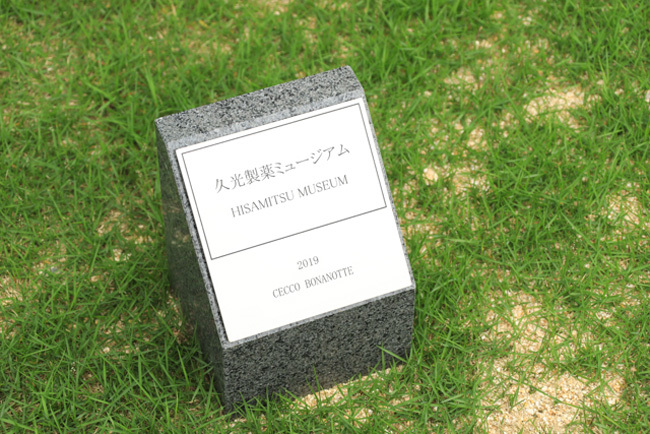
At the entrance, visitors are greeted by a counter crafted from an ancient enoki tree that had taken root on the grounds. It was felled due to decay and the risk of falling, and it was discovered by chance that the tree was 170 years old. Its design, featuring stacked wooden pieces like building blocks, expresses this history. The counter was created with the enoki tree, which had watched over Hisamitsu Pharmaceutical since its founding, and the desire to remain close to it going forward.
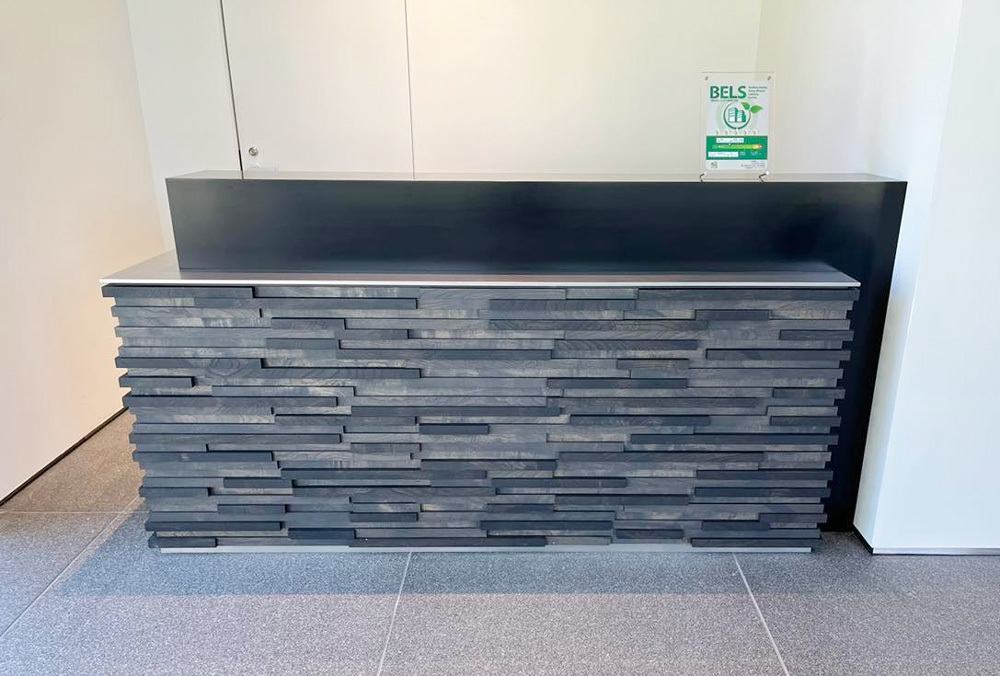
Incidentally, this museum is the first in Saga Prefecture and the second in Kyushu to obtain ZEB (Net Zero Energy Building) certification. By suppressing energy loads and actively utilizing natural energy, it has become a facility excelling in energy conservation and energy generation. It is a museum that thoroughly expresses the company's stance down to the finest details.
Thoughts for Tosu and the Employees
Hisamitsu Pharmaceutical operates a dual headquarters system in Saga Prefecture and Tokyo, but its registered headquarters remains in Tosu City, Saga Prefecture. The company believes its journey from a small local enterprise to "Hisamitsu Pharmaceutical, a global brand" was made possible by the support of local people, particularly those in Tosu City, Saga Prefecture, throughout its long history. Driven by a desire to give back to the community, Hisamitsu Pharmaceutical has long engaged in various local outreach activities. The outdoor tea ceremonies held in the museum garden, welcoming local stakeholders and tea ceremony enthusiasts, are part of this commitment.
The museum also honors the company's gratitude towards its employees. Within the museum grounds stands a memorial monument. It is dedicated to employees who passed away either after retirement or during their tenure. The existence of today's Hisamitsu Pharmaceutical is owed to them, and every year, managers offer prayers here with heartfelt appreciation.

This spirit of gratitude is sometimes extended to healthcare workers. The Hisamitsu Pharmaceutical Museum participated in the "Blue Light Up" initiative to express appreciation for healthcare workers fighting COVID-19. Furthermore, during May's Red Cross Movement Month, it joined the "Red Light Up Project," an effort to raise awareness about the importance of "humanity," a core value championed by the Japanese Red Cross Society.

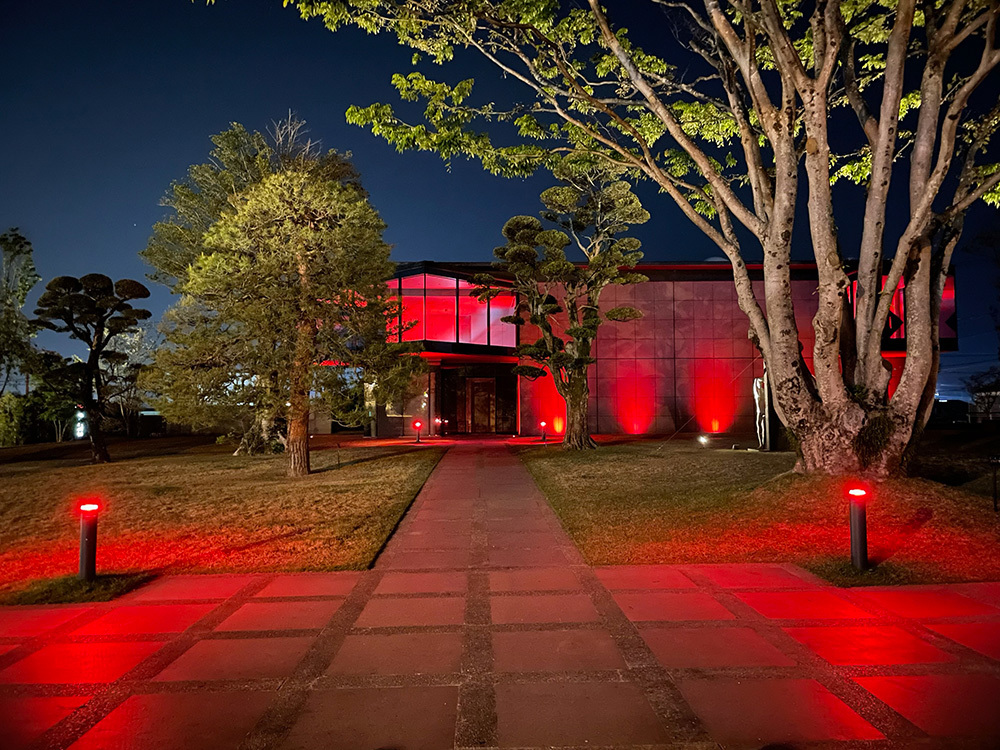
Bringing the Culture of "Hand Treatment" to the World
Since the launch of "Asahi Mankin-ko" in 1907, pain relievers and anti-inflammatory agents, represented by Salonpas, have been cherished by many as medicines that treat pain and stiffness by "applying." What Hisamitsu Pharmaceutical values is the culture of "hand treatment." "Hand treatment" embodies compassion for the person receiving care. This is the origin of "applying" and represents the caring treatment culture cherished since the company's founding. The Hisamitsu Pharmaceutical Museum conveys gratitude to the local community, employees, and healthcare professionals. It will continue to pass on this culture of "hand treatment" to employees and stand as a beautiful symbol of the company's spirit, showcasing its beauty to the world.
[Editor's Note] (From the Web Dentsu Inc. Editorial Department)
I've heard that the core of Hisamitsu Pharmaceutical's business lies in the "Transdermal Drug Delivery System (TDDS)". While this is incredibly difficult for medical laypeople to grasp, put simply, it means "delivering medication to the affected area via the skin, rather than through the mouth or blood vessels."
Don't dismiss it lightly as "just like a patch." If simply applying something like a patch anywhere on the body could heal various parts, that would be an incredible technological breakthrough. I hear this field is one of the world's most cutting-edge medical research themes. Imagine being able to perform treatments previously impossible without cutting into the patient—just by applying a patch-like device anywhere, whether it's the buttocks or the arm. Wouldn't that be like a dream?
And here's the crucial point: Hisamitsu Pharmaceutical's medicated patches, described as "easy to apply, resistant to peeling off, and easy to remove," seem truly unique worldwide. Considering that their founding philosophy of "wanting to be close to pain" has led to creating such a product is truly humbling. And that is something we can take pride in as fellow Japanese.
Was this article helpful?
Newsletter registration is here
We select and publish important news every day
For inquiries about this article
Back Numbers
Author

Kyoko Fujii
PR Consulting Dentsu Inc.
Executive Office, Public Relations Department / Visiting Associate Professor, Graduate School of International Liberal Arts
Supports public relations for domestic and international companies, governments, and municipalities. Currently serves as the company's public relations officer. Received the 2015 Golden World Award from the International Public Relations Association. Authored and edited works include: 'Municipal PR Strategy: Learning from 17 Success Stories' (Jiji Press), 'Communicating: A Guide to PR in Japan' (Wiley), and 'Welcome to the Corporate Museum: Volumes 1 & 2' (Jiji Press). Certified PR Planner by the Japan Public Relations Association. Visiting Associate Professor at the Graduate School of Global Communication and Language, Akita International University, starting in 2024.




